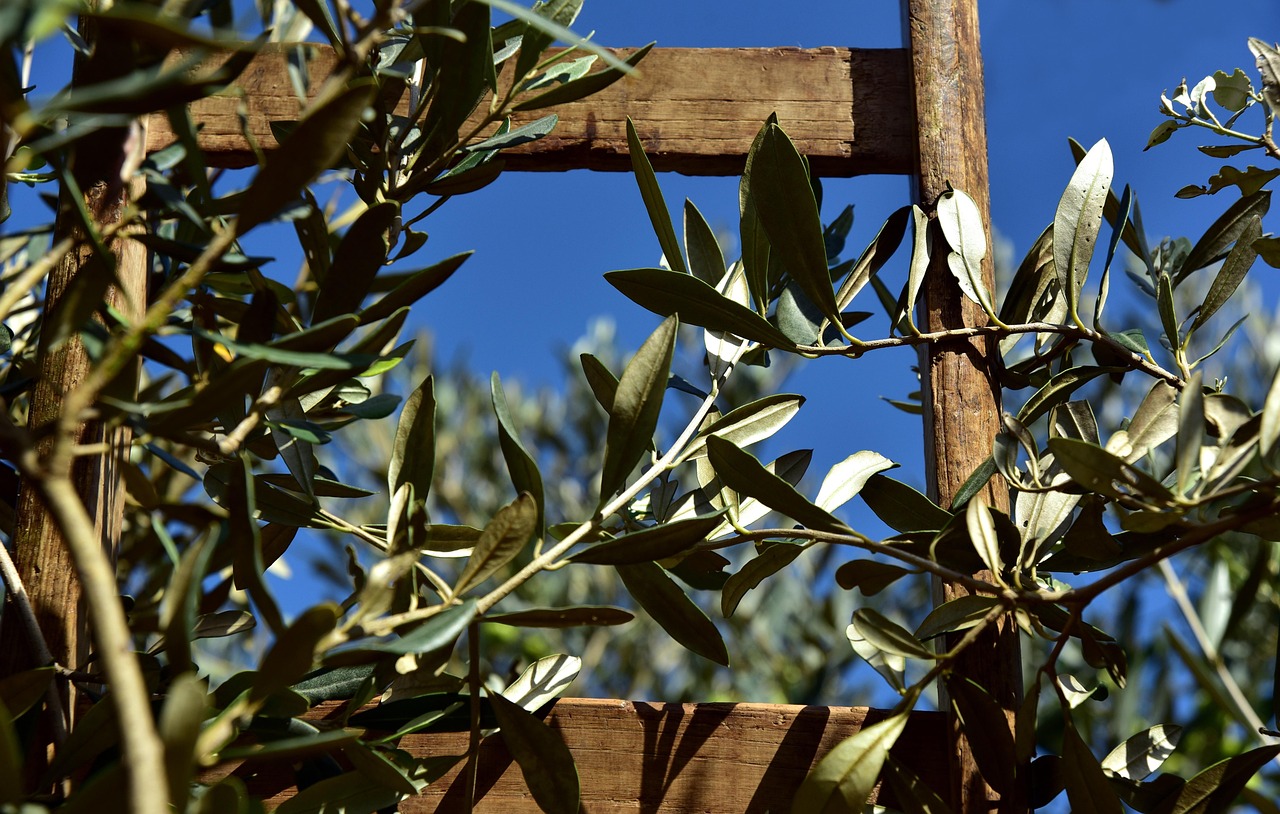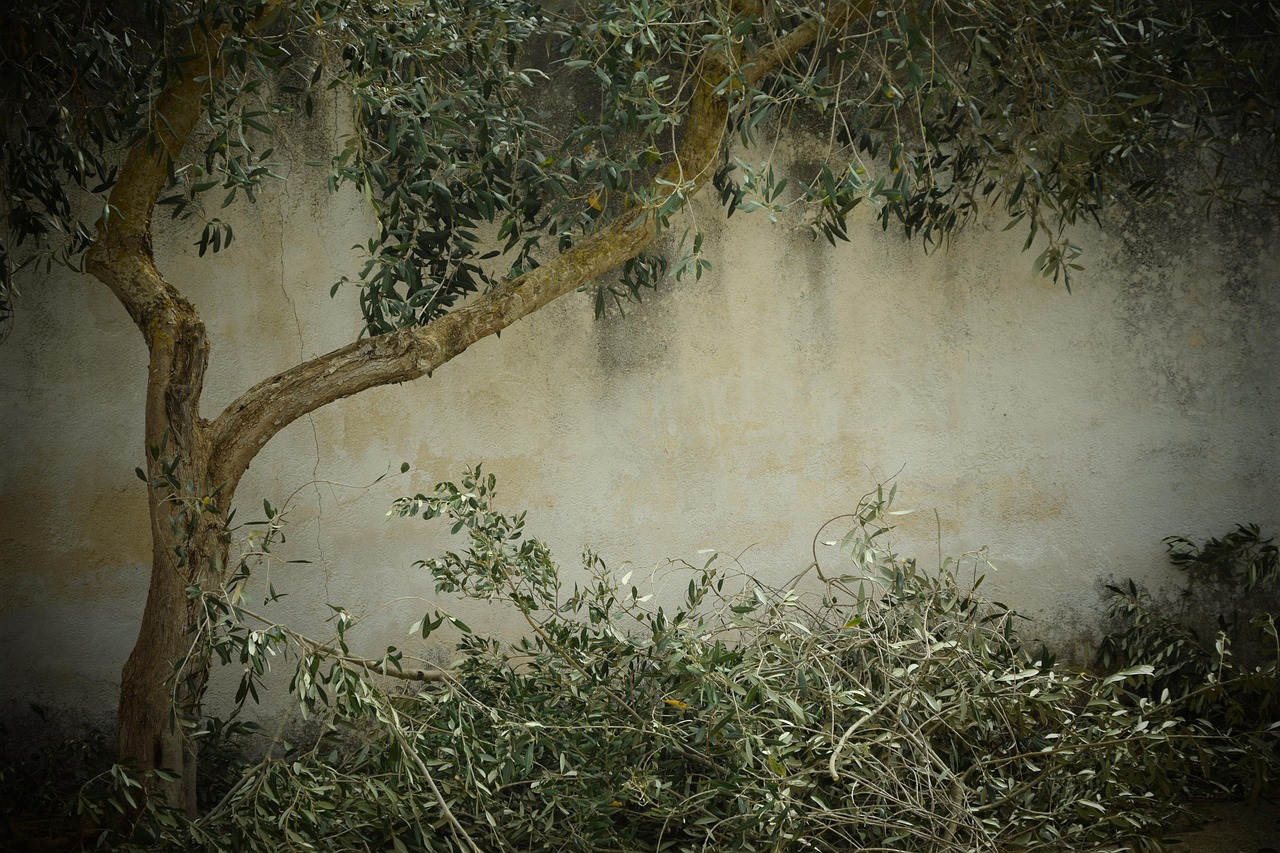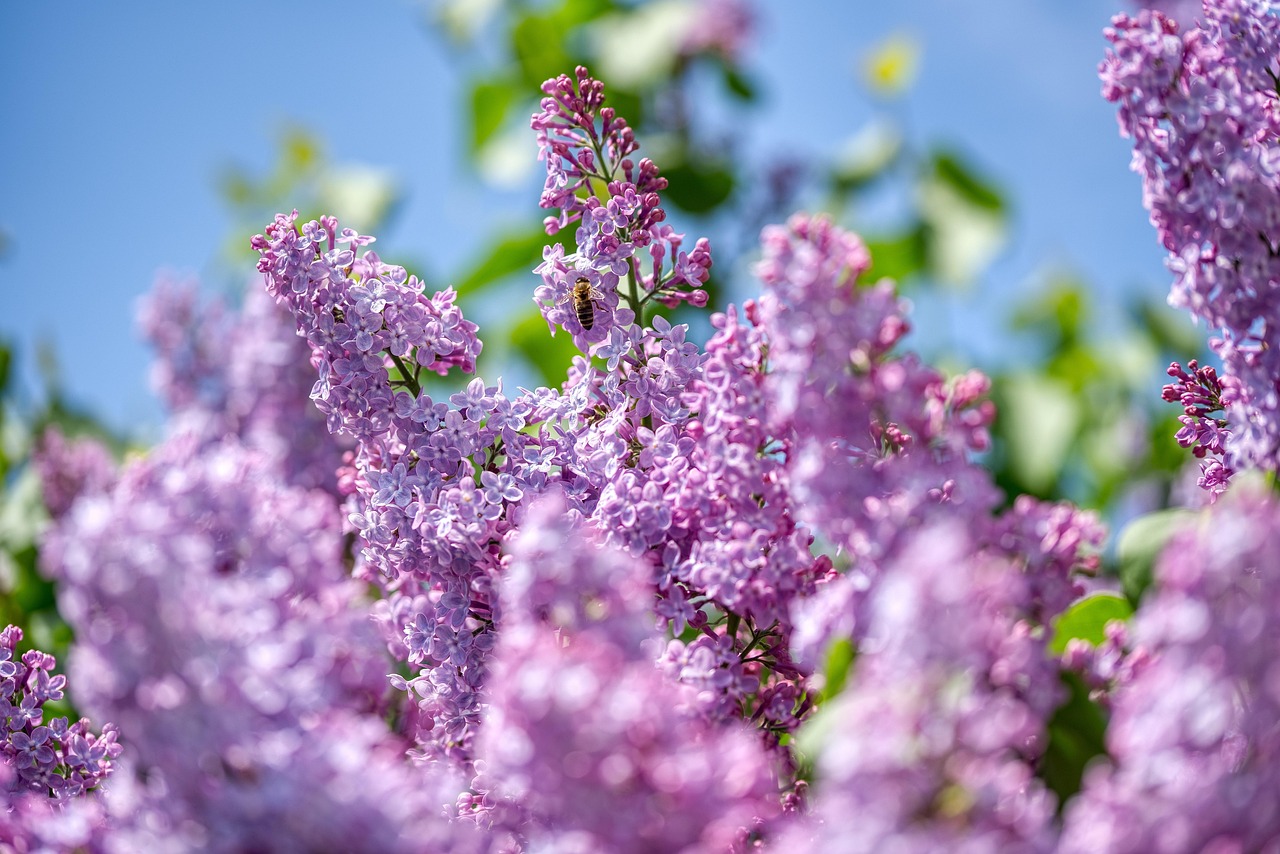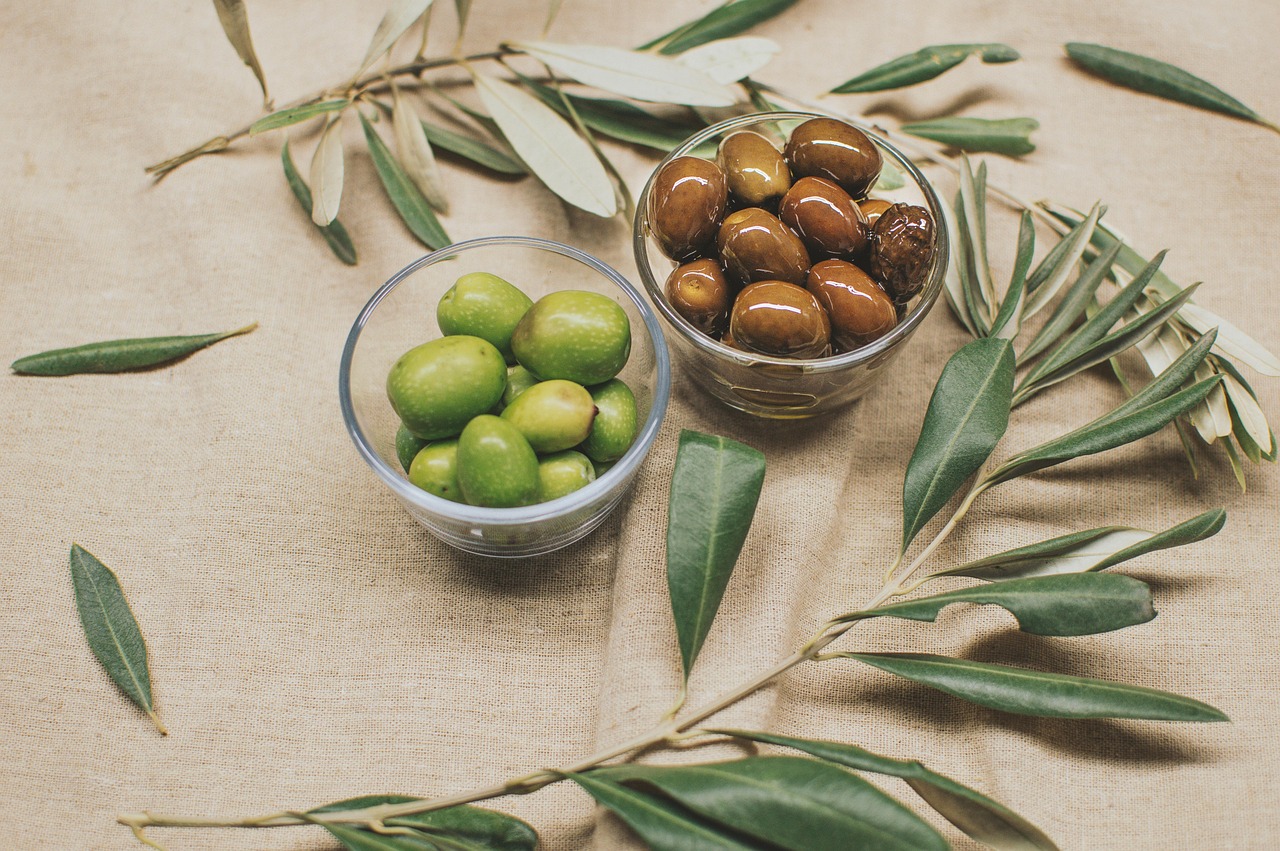Pruning olive trees is essential for effective shade management. Proper techniques enhance light penetration, improve air circulation, and promote healthier growth. Regular pruning also helps maintain the desired shape and size of the tree, ensuring it provides optimal shade without compromising its health.
Olive trees (Olea europaea) are not only prized for their fruit and oil but also for their ability to provide shade in gardens and landscapes. These trees are known for their resilience and adaptability to various climates, making them a popular choice in many regions. However, to maximize their benefits, especially in terms of shade provision, proper pruning is crucial. Pruning affects how the tree grows, its overall health, and its ability to cast shade effectively.

Understanding the basics of olive tree pruning can help gardeners and landscape managers achieve better results. Pruning involves removing specific branches to enhance the tree’s structure and function. This process encourages new growth, increases light exposure, and helps the tree maintain a balanced shape. There are several key considerations to keep in mind when pruning olive trees for shade management.
Why Prune Olive Trees?
Pruning olive trees serves several important purposes:
- Enhances Air Circulation: Reducing dense foliage allows for better airflow within the tree, which can help prevent diseases.
- Improves Light Penetration: Pruning opens up the canopy, ensuring that sunlight reaches all parts of the tree.
- Encourages Healthy Growth: Removing dead or diseased branches promotes healthier new growth.
- Makes Maintenance Easier: A well-pruned tree is easier to care for and manage over time.
- Shapes the Tree: Regular pruning helps maintain the desired height and width for optimal shade coverage.
In addition to these benefits, understanding the timing and techniques for pruning is essential. The best time to prune olive trees is during late winter or early spring when the tree is still dormant. This timing reduces stress on the tree and minimizes sap loss.

Key Facts About Olive Trees
| Fact | Description |
|---|---|
| Species | Olea europaea |
| Height | Typically 15 to 30 feet |
| Climate | Tolerates drought; prefers Mediterranean climates |
| Fruit | Produces olives, harvested for oil or eating |
| Lifespan | Can live for hundreds of years with proper care |
When planning to prune olive trees for shade management, it is also important to understand the structure of the tree. Olive trees typically have a central leader with several lateral branches. This natural growth pattern can be modified through careful pruning techniques. Ideal pruning will aim to create an open center, allowing light and air to circulate freely through the tree.
Pruning Techniques for Better Shade Management
There are various pruning techniques that can be utilized depending on the specific needs of the tree and the desired outcome. Here are some effective methods:
- Crown Thinning: This technique involves selectively removing branches from the canopy to reduce density while maintaining the overall shape. This allows more sunlight to filter through and helps maintain healthy foliage.
- Crown Raising: This method removes lower branches to elevate the canopy. It increases light availability underneath the tree while still providing ample shade above.
- Crown Reduction: Reducing the size of the tree by cutting back the height or width can help keep it manageable while still providing shade.
- Heading Back: This involves cutting back a branch to a bud or lateral branch. It encourages new growth and can help shape the tree as needed.
Each of these techniques can be tailored to individual trees based on their growth patterns and specific shading needs. It is essential to use clean, sharp tools when pruning to minimize damage and prevent disease transmission.

The benefits of these techniques extend beyond just shade management. By promoting healthier growth and improving overall tree structure, gardeners can enjoy a beautiful landscape while also enhancing their olive trees’ productivity.
Tools for Olive Tree Pruning
Having the right tools is essential for effective pruning. Here are some commonly used tools:
- Hand Pruners: Ideal for small branches up to ¾ inch thick.
- Loppers: Useful for cutting thicker branches up to 2 inches thick.
- Saws: A pruning saw is necessary for larger branches that cannot be cut with hand tools.
- Pole Pruner: This tool helps reach high branches without needing a ladder.
- Protective Gear: Always wear gloves and eye protection when pruning.
Using these tools properly will ensure a clean cut, which helps promote healing and reduces stress on the tree. Pruning olive trees requires knowledge and skill, but with practice, anyone can learn to manage their trees effectively for optimal shade and health.

Timing Your Pruning
Choosing the right time to prune olive trees is crucial for promoting healthy growth and maintaining optimal shade. Timing affects how well the tree responds to pruning and can influence fruit production as well. Generally, the best time to prune olive trees is late winter or early spring, just before new growth begins. This timing allows you to avoid disrupting the tree’s natural growth cycle.
Here are some reasons why timing is essential:
- Minimizing Stress: Pruning during dormancy reduces stress on the tree. This means the tree can better recover and grow after cuts are made.
- Encouraging New Growth: Pruning just before the growing season promotes vigorous new growth, which is essential for producing shade and fruit.
- Preventing Disease: Pruning during dry seasons minimizes the risk of fungal infections that can occur when wounds remain exposed to moisture.
- Optimizing Fruit Production: Properly timed pruning can enhance fruit yield by allowing more sunlight to reach the inner branches.
Understanding Olive Tree Growth Patterns
To effectively manage shade through pruning, it is important to understand how olive trees grow. Olive trees exhibit a unique growth pattern characterized by a central leader and outward-reaching lateral branches. This pattern can be modified through strategic pruning techniques.
Key aspects of olive tree growth patterns include:
- Central Leader: The main trunk that supports the tree’s structure. Maintaining a strong central leader is essential for overall stability.
- Lateral Branches: These branches extend from the central leader and contribute to the tree’s canopy. The density and arrangement of these branches affect how much shade the tree provides.
- Growth Habit: Olive trees often have a naturally spreading habit. Understanding this can help in deciding which branches to prune for better light penetration.
- Leaf Density: The density of leaves on a branch impacts how much light filtering occurs. Thinning out dense areas can improve light exposure to lower branches.
Common Mistakes in Pruning
Pruning olive trees can be challenging, and several common mistakes can hinder optimal growth and shade management. Being aware of these pitfalls is essential for successful pruning.
- Over-Pruning: Removing too many branches can lead to excessive stress on the tree and reduce its ability to produce fruit and foliage.
- Improper Cuts: Making cuts too close to the trunk or leaving stubs can lead to decay and disease. Always make clean cuts at appropriate angles.
- Ignoring Tree Shape: Pruning without considering the natural shape of the tree can result in an unnatural appearance and uneven growth.
- Neglecting Lower Branches: Focusing solely on the upper canopy can lead to overcrowding in lower branches, which may reduce overall health and light access.
- Timing Errors: Pruning at the wrong time can lead to sap loss and increased vulnerability to diseases. Always aim for late winter or early spring.
Post-Pruning Care
After pruning, providing proper care for olive trees is essential for recovery and growth. This involves several steps that help support the tree as it heals from cuts made during pruning.
- Watering: Ensure the tree receives adequate water after pruning, especially during dry spells. This promotes healing and encourages new growth.
- Fertilization: Applying a balanced fertilizer after pruning can provide essential nutrients that support recovery and enhance growth.
- Monitoring for Pests: Keep an eye out for pests and diseases that may take advantage of the stress from pruning. Early detection is key to managing issues effectively.
- Avoiding Heavy Foot Traffic: Limit foot traffic around the base of the tree to prevent soil compaction, which can hinder root development.
- Mulching: Applying mulch around the base of the tree helps retain moisture, suppress weeds, and maintain even soil temperatures.
The Role of Climate in Pruning Strategies
The climate in which olive trees are grown significantly influences pruning strategies. Different climates can affect how trees respond to pruning and what techniques are most effective.
Considerations based on climate include:
- Tropical Climates: In regions with consistently warm temperatures, pruning may focus more on shaping rather than heavy thinning, as trees grow throughout the year.
- Temperate Climates: In areas with distinct seasons, pruning should be timed to fall before dormancy to allow trees to recover during winter.
- Drought-Prone Areas: In regions with limited water supply, it’s essential to prune conservatively to maintain foliage that supports photosynthesis.
- Cold Climates: In colder areas, pruning should prioritize removing damaged or dead wood while ensuring that healthy branches remain intact for fruit production.
Understanding these climate-specific factors helps in developing an effective pruning strategy tailored to local conditions. By combining knowledge of growth patterns, timing, techniques, and post-pruning care, olive tree owners can achieve better shade management while ensuring the health and productivity of their trees.
Identifying the Right Pruning Techniques
Choosing the appropriate pruning technique is essential for effective management of olive trees. Different methods serve specific purposes and can drastically impact the tree’s health, shape, and ability to provide shade. Below are some common pruning techniques used in olive tree management:
- Selective Pruning: This technique involves removing specific branches to enhance light penetration and air circulation without altering the tree’s overall shape significantly. Selective pruning is often ideal for mature trees needing maintenance.
- Renewal Pruning: This method focuses on removing old, unproductive wood to encourage new growth. It is particularly effective for trees that have become overgrown or have stopped producing fruit effectively.
- Formative Pruning: Typically performed on young trees, formative pruning shapes the tree as it grows. The goal is to establish a strong structure that allows for optimal sunlight exposure and airflow.
- Maintenance Pruning: This ongoing practice involves lightly trimming branches to maintain size and shape. It can be performed annually to keep the tree in check.
Understanding Olive Tree Varieties
Different varieties of olive trees may respond differently to pruning. Understanding these differences can help in tailoring your approach for better shade management. Here are some popular olive tree varieties:
| Variety | Description | Common Use |
|---|---|---|
| Arbequina | A small, hardy tree known for its high oil yield. | Oil production and table olives. |
| Manzanilla | A compact tree producing small, flavorful olives. | Table olives and oil. |
| Koroneiki | A vigorous tree with a strong structure. | High-quality olive oil. |
| Frantoio | A traditional Italian variety known for its aromatic oil. | Culinary oil and table olives. |
| Mission | A versatile tree that produces large black olives. | Both oil production and table olives. |
Each variety has unique growth habits and fruiting characteristics. Understanding these traits helps determine the most effective pruning techniques to use for optimal shade management and productivity.
The Impact of Soil Quality on Pruning
The soil quality where olive trees are planted can significantly influence their growth and response to pruning. Healthy soil supports robust root systems, allowing trees to thrive. Here are some factors to consider regarding soil quality:
- Nutrient Content: Ensuring the soil has adequate nutrients is vital for tree health. Nutrient-deficient soil can lead to poor growth and lower fruit yields.
- Drainage: Olive trees prefer well-drained soil. Poor drainage can lead to root rot, making it crucial to assess drainage conditions before pruning.
- pH Levels: Olive trees thrive in slightly alkaline soil (pH 7-8). Testing the soil pH can help determine if amendments are needed for optimal growth.
- Soil Texture: Sandy loam is ideal for olive trees, providing both drainage and moisture retention. The texture affects how well the roots can absorb water and nutrients.
Pest and Disease Management Post-Pruning
Post-pruning care also includes managing potential pests and diseases that may threaten olive trees. Stress from pruning can make trees more vulnerable, so monitoring is essential. Common pests include:
- Olive Fruit Fly: This pest lays eggs in olives, leading to fruit drop. Regular monitoring and traps can help manage this issue.
- Scale Insects: These pests suck sap from the tree, weakening it over time. Chemical or organic treatments can help control infestations.
- Leaf Spot: Fungal infections like leaf spot can develop due to excessive moisture on leaves. Proper pruning improves airflow and reduces humidity around the foliage.
- Root Rot: Caused by overwatering or poor drainage, root rot can devastate olive trees. Ensure proper drainage and avoid overwatering after pruning.
Cultural Practices for Olive Tree Health
Cultural practices play a critical role in maintaining healthy olive trees and ensuring successful pruning outcomes. Here are some practices that support tree health:
- Irrigation Management: Proper watering is essential during dry periods, especially after pruning. Use drip irrigation systems to provide consistent moisture while minimizing waste.
- Mulching: Applying organic mulch around the base of the tree helps retain soil moisture, suppress weeds, and regulate soil temperature.
- Crop Rotation: If you have other crops planted nearby, rotating them can help prevent soil-borne diseases that affect olive trees.
- Regular Monitoring: Keeping an eye on tree health throughout the growing season allows for early detection of issues, making it easier to address them before they escalate.
By implementing these cultural practices along with effective pruning techniques, olive tree owners can significantly enhance their trees’ health and productivity, resulting in better shade management and overall vitality.
The Role of Fertilization in Olive Tree Care
Fertilization is another critical component of olive tree care that can impact how well trees respond to pruning. Providing proper nutrients supports recovery after pruning and enhances overall growth. Here are key points regarding fertilization:
- Nutrient Requirements: Olive trees benefit from balanced fertilizers that contain nitrogen, phosphorus, and potassium (N-P-K) ratios suited for their growth stage.
- Timing of Application: Fertilization should ideally occur after pruning when the tree is gearing up for new growth in spring.
- Organic Options: Organic fertilizers, such as compost or well-rotted manure, can improve soil structure while providing essential nutrients.
- Avoid Over-Fertilization: Too much fertilizer can lead to excessive vegetative growth at the expense of fruit production and can burn the roots.
By integrating effective fertilization strategies with pruning practices, olive tree growers can create a healthy environment that fosters robust growth and optimal shade management throughout the growing season.
Integrating Technology in Olive Tree Management
As technology continues to advance, olive tree management practices are evolving as well. Implementing modern techniques can enhance the efficiency of pruning and overall tree care. Here are some technological advancements that can benefit olive tree growers:
- Drone Technology: Drones equipped with cameras can provide aerial views of olive orchards, helping growers assess tree health and canopy density from above. This information can inform pruning decisions, ensuring optimal light and air flow.
- Soil Moisture Sensors: These sensors can monitor soil moisture levels in real-time. Understanding moisture content helps growers manage irrigation more effectively, especially after pruning when trees need adequate hydration.
- Mobile Applications: Various applications are available to assist growers in tracking tree health, scheduling maintenance tasks, and managing pest control. These tools allow for timely interventions and data-driven decision-making.
- Precision Agriculture: This approach uses data analytics and mapping technologies to optimize planting, fertilization, and irrigation practices. It ensures that resources are used efficiently, promoting healthier trees and better yields.
Incorporating these technologies into olive tree management can lead to improved efficiency and productivity. As the industry continues to evolve, staying informed about new tools and techniques will be beneficial for all olive growers.
The Importance of Community and Knowledge Sharing
Another critical aspect of successful olive tree management is the role of community and knowledge sharing among growers. Engaging with fellow olive producers can provide valuable insights and enhance the overall quality of cultivation practices. Here are some ways to foster community engagement:
- Workshops and Seminars: Attending or organizing local workshops can provide practical training on effective pruning techniques, pest management, and other essential skills.
- Online Forums and Groups: Participating in online discussions can help growers share experiences, ask questions, and learn from one another about best practices in olive management.
- Collaborative Research: Joining forces with local agricultural institutions or universities can facilitate research initiatives that focus on improving olive cultivation practices specific to a region.
- Farm Visits: Organizing visits to other farms allows growers to observe different pruning techniques and management practices in action, inspiring new ideas for their own orchards.
Building a strong community among olive growers fosters an environment of learning and innovation. This collaboration can lead to improved methods that enhance both shade management and overall tree health.
Environmental Considerations
As olive tree cultivation continues to grow, it is essential to consider its environmental impact. Sustainable practices not only benefit the planet but also contribute to healthier trees and better yields. Here are some environmental considerations for olive growers:
- Biodiversity: Promoting biodiversity within olive orchards can create a balanced ecosystem. Planting cover crops or native plants can attract beneficial insects that aid in pest control.
- Water Conservation: Implementing efficient irrigation systems, such as drip irrigation, conserves water while ensuring trees receive adequate moisture. This is especially important in drought-prone areas.
- Pesticide Management: Reducing reliance on chemical pesticides by using organic methods or integrated pest management (IPM) can minimize environmental harm while enhancing tree health.
- Soil Health: Maintaining healthy soil through composting and organic amendments improves soil structure and nutrient availability, benefiting tree growth and sustainability.
By adopting environmentally friendly practices, olive growers can ensure the longevity of their orchards while contributing positively to the ecosystem.
Conclusion
Successfully managing olive trees for better shade involves a combination of effective pruning techniques, appropriate timing, careful attention to soil quality, and ongoing care. Understanding the unique characteristics of different olive varieties and engaging with technology can further enhance cultivation practices.
The integration of community knowledge sharing fosters innovation and improvement among olive growers, while environmental considerations ensure sustainable practices that benefit both the trees and the planet. By applying these insights, olive tree owners can create an optimal environment for shade provision, productivity, and overall tree health.
Ultimately, with the right strategies in place, olive trees can flourish beautifully in gardens and orchards, providing shade for years to come while contributing to a sustainable agricultural landscape.
